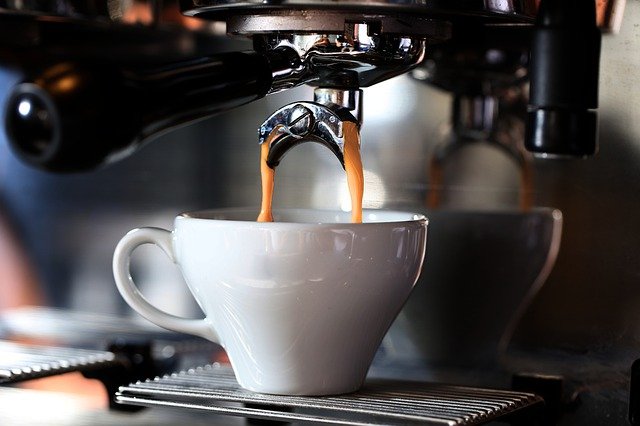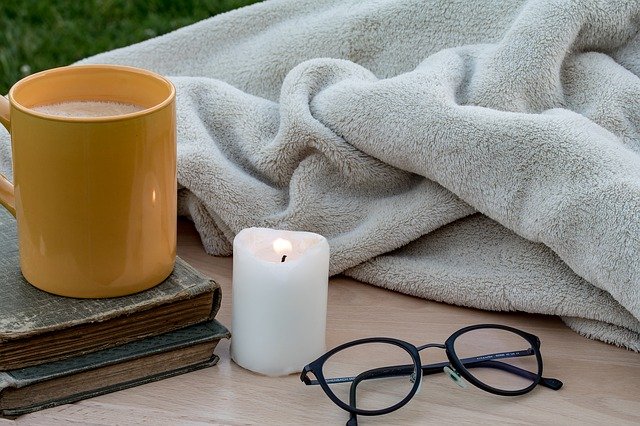The Differences Between Pour-Over And Automatic Drip
Is it possible to meditate while drinking coffee? Despite what may seem to be a paradox, movement meditation is the practice of bringing mindfulness and purpose to ordinary actions, enabling us to be completely present and express appreciation for all that we have in our lives.
The enjoyment of your favorite hot coffee each morning certainly feels like a given—something you take for granted and depend on to get you through the morning. Some of us click a button and are rewarded with a hot cup of coffee in a matter of seconds.
Consider the possibility that we choose to infuse purpose back into our daily routine by trading out our electronic coffee makers for a more visceral and connected brewing procedure instead.
Coffee prepared in a pour-over style
Using a pour-over coffee maker allows us to be more hands-on with our coffee, making our daily routine more of a ritual. Apart from bringing us into the present moment and reawakening us even before the caffeine, this manual technique also produces some of the most excellent coffee that can be produced in the world.

There is nothing new about the pour-over method of making coffee. There has been a revival of interest in the drip coffee process, which dates back to the 1800s.
During the third wave of coffee throughout the world, a slower and more thoughtful approach to brewing coffee was re-ignited, with the hands-off simplicity of the electric drip coffee machine being replaced by the more complicated but satisfying experience of the pour-over brewer.
However, although pour-over coffee seems to be yet another overcomplicated hipster cliché, it is actually—as many hipster trends tend to be—a harkening back to a simpler time when human skill and ingenuity were depended on much more than technology.
The processes and the end result of pour-over and drip coffee are similar in that they both employ hot water and gravity to produce a robust but accessible cup of coffee, but they vary in a number of important ways.
Learn more about the differences between pour-over and drip coffee, as well as why some people are tempted to ditch the Mr. Coffee in favor of a more deliberate approach to brewing, in this article. You’ll also learn which technique may be best for your taste and daily schedule.
A quick overview of the history of drip coffee is shown here.
Most of the time, evolution is not symmetrical. A world prior to globalization saw processes and technologies being invented on opposite sides of the globe and then being exchanged at the pace of commerce.
When it came to the first few centuries of coffee use, some type of decoction (soaking coffee grinds in water) was utilized, which was often made in big pots that took hours or even days to brew.
The Ibrik technique (which is comparable to Turkish coffee) makes use of smaller pots, which reduces brew time to minutes, making it more reasonable to prepare fresh coffee every day. Until the start of the twentieth century, coffee could only be purchased in cafés or coffee carts, until the advent of the percolator and the stovetop espresso machine made it easy and economical to brew at home.
To filter out coffee grinds from her cup in 1908, Melitta Bentz used a piece of notepaper from her son’s notebook to filter them out. A new kind of coffee filter was created, paving the stage for the drip coffee revolution to take place.
While metal and cloth filters had previously been used to filter coffee, they had the unfortunate effect of imparting undesirable tastes into the beverage. As a result of the introduction of the paper filter, many people felt it to be preferable to the muddy and grind-filled brews of previous generations of coffee makers.
Throughout the twentieth century, pour-over drip coffee grew more popular with homebrewers. Melitta was the major producer of paper filters and pour-over equipment, both of which they continue to manufacture today.
Automatic drip coffee machines (also known as espresso machines) provided coffee consumers with unprecedented simplicity and convenience. Hot, fresh, grind-free coffee might be at your fingertips with the push of a button. All you had to do was add the ground coffee and fill the reservoir with water; it was the identical process every time you made it.
Technivorm Kitchen counter with a Moccamaster in it
It was possible for coffee consumers to set and forget their automated drip machine thanks to this invention. Bean Poet (Bean Poet) is a poet who lives in the United States.
The majority of homes and workplaces will have automated drip devices that will run continuously throughout the day in a few of years, We’ve only just seen the resurgence of pour-over style coffee in cafés and at home, thanks to the third wave of artisanal coffee and a return to purposeful hand-crafted drinks. Nevertheless, is it really worth all of the additional trouble?
What is the difference between pour-over coffee and automatic drip coffee?
There are significant differences between the pour-over approach and the automated drip method:
It provides a more rich and subtle taste profile; it enables you to have complete control over every stage of the process; and it is more environmentally friendly than conventional methods.
The downside is that it is less repeatable and requires a degree of expertise and concentration that may be beyond what your morning is capable of providing at this point.
Coffee may be used as a kind of meditation in this situation. Your daily cup of coffee has the potential to become more of a ritual if you so want. Start your day with purpose and mindfulness.
For those who have busy mornings and find that a basic (often pre-programmable) automated drip machine relieves stress while also allowing them to get their families out the door on time, this is definitely the ideal approach for them—at least during the workweek.
When done properly, pour-over brewing can provide an intimate, grounded intimacy to your coffee brewing experience that has the potential to infuse your day with the mindful gratitude that so many of us are searching for. If you have the time and the interest, however, pour-over brewing can be a rewarding and fulfilling experience.
Let’s take a deeper look at the pour-over brewing procedure and how it varies from the use of an electric drip coffee maker to see how they compare.
Having a cup of coffee
If you ask me, the taste of your coffee is the most vital part (after the pleasant boost provided by caffeine, that is!) Caffeine tablets might suffice if the coffee itself didn’t taste well enough to warrant the use of such pills.
A pour over filter with coffee grinds in it.
The first step in the pour-over process is to extract the most flavor possible from the coffee grounds.
When it comes to extracting tastes and fragrances from coffee grinds, the method you choose makes a significant difference. A nice cup of coffee may be made using an automated drip machine, especially if you use high-quality beans and the right grind size.
With practice, though, you’ll be able to extract unique layers of taste from your beans, each of which will tell the tale of where they came from. For this same reason, the pour-over technique is often preferred by coffee connoisseurs: it allows them to better extract the rich and subtle flavors found in premium single-origins.
Have complete command of the brewing process
Because of the level of control you have over every phase of the process, you can extract greater clarity of taste and subtle characteristics from a pour-over technique.
You have complete control over the temperature of the water. If you want to prevent scorching your grounds, we recommend a gooseneck water kettle with a built-in thermometer. What’s more, you have complete control over the amount of water used, the degree of saturation achieved, and the time of the brewing process.
Pour-over enables you to saturate your grinds in numerous phases, the most crucial of which is the initial pour, sometimes known as “the bloom,” which is similar to the pre-infusion stage when making espresso.
Breathing in the carbon dioxide that has accumulated throughout the roasting process by lightly soaking your coffee grinds with hot water and letting them to “bloom” is beneficial. More uniform extraction is achieved because carbon dioxide repels water, which allows for more extraction of preferred tastes while simultaneously releasing the less desirable bitter properties of a product.
Although this level of control is fundamental to what distinguishes pour-over from other methods, it is also the point at which things may go awry. It may take some trial and error to get the perfect cup of coffee, and it will take time and practice to perfect your technique.
With a little patience, this procedure may be a wonderful chance to reconnect with the act of creating and to bring mindfulness back into your daily routine.
For an in-depth and consistent guide to the pour-over procedure, watch this Blue Bottle Coffee demonstration for a deliberate and repeatable step-by-step tutorial:
Best Coffee Books to Learn More About It Is it harmful to eat a coffee bean? 7 RANDOM COFFEE FACTS
5 non-coffee methods to get up in the morning
These are the top-rated coffee shop in every state.
WHAT TO DO IF YOU OVERCOOK FOOD
7 RANDOM COFFEE FACTS
5 non-coffee methods to get up in the morning
These are the top-rated coffee shop in every state.
WHAT TO DO IF YOU OVERCOOK FOOD
Sustainability
Pour-over is not only the most effective means of extracting the greatest richness and subtlety from your beans, but it is also one of the most environmentally friendly brewing processes available. You may further decrease waste by using a reusable filter or a filterless dripper.
The use of automatic drip machines consumes a significant amount of energy, especially when they are kept on to keep coffee warm, and many of us are in the habit of making full pots of coffee even when they will not be eaten in their whole.
Pour-over equipment is likewise constructed to endure for a very long time. Because of the simplicity of the dripper design, they are simple to clean and will last a lifetime if properly cared for.
Especially with lower-end, budget models, auto drip coffee makers may be difficult to clean correctly. They are also known to chip, break, and cease operating with time. The recycling of electronics may be a tough task in certain locations, and many end up in landfills.
Which strategy is most appropriate for you?
The tried-and-true automated drip technique is probably the best choice for you if you like simplicity and convenience and are satisfied with the performance of your coffee beans. This is especially true if you like to brew multiple cups of coffee throughout the day.
Consider trying the pour-over technique if you want to uplevel your home coffee experience, add a level of both focus and purpose back into your brewing process, and extract the most flavor from your favorite coffee.
You may spend a lot of money on elaborate coffee equipment, but a basic coffee dripper that rests on top of your cup will suffice.
A good cup of coffee can be made with any brewing technique if you use high-quality coffee beans, the suitable grind size, and the perfect ratio of coffee to water. However, giving pour-over a try could just take your coffee game to a whole new level.





